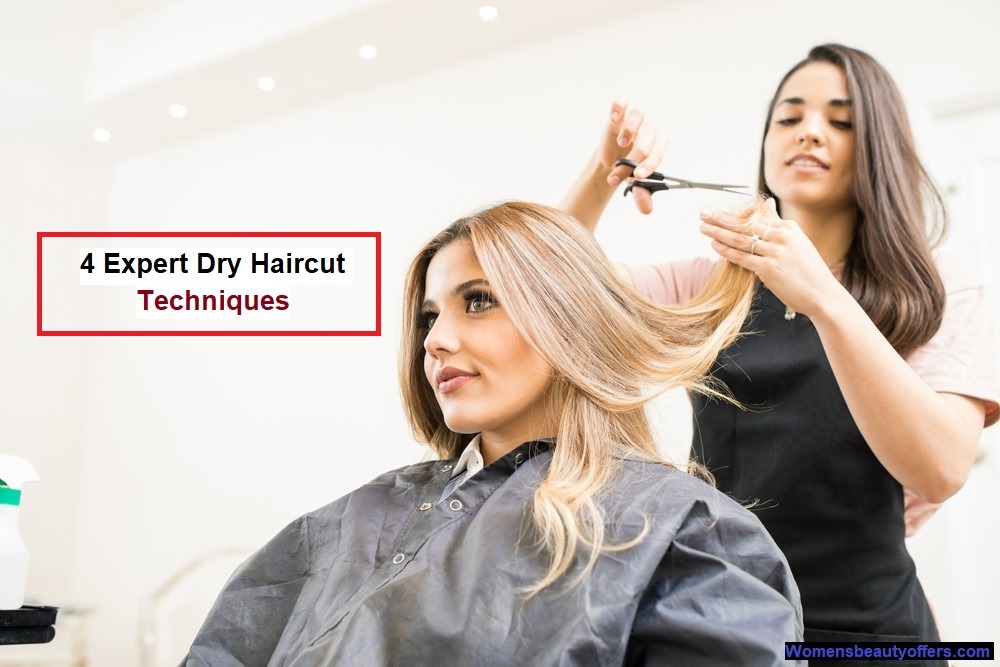Table of Contents
Stylists have the choice to cut hair while it’s either wet or dry, and there’s plenty of evidence showing that both have their benefits. However, many frequent salon-goers have voiced their opinion in favor of the dry cut for regular trims and cuts. If a client isn’t quite sure of their preference or wants to learn more about the difference, it’s a good idea to recommend a dry cut first. It’s a great option for basic salon visits and routine appointments. Find here – 4 Expert Dry Haircut Techniques.
If a stylist has been trained to perform wet cuts most of the time, however, it’s a good idea to brush up on some traditional (and handy) dry cutting techniques and know how it can benefit different clients. Here are four different dry haircut techniques all stylists should know and recommend for their clients.
A Word on Dry Haircuts
It’s important for stylists to have different haircut techniques under their belt so they can be confident that they’re giving their clients the best option. In terms of dry cutting, clients might request this type of technique in particular due to its recent spike in popularity. Dry cutting is also a good idea when it comes to wavy or curly-haired clients in particular because it allows for a more exact cut and there are no surprises or changes when cutting wet curls that might dry in a different length or shape. Dry cutting can cut the client’s time in the salon chair, too, leaving more time for the stylist to actually style the hair with their favorite hair styling products and get them out the door faster.
Dry cutting can be better for thin, fine or fragile hair as well. Since there’s less combing involved in the dry cutting process, the hair is less prone to breakage during the haircut. In addition to these reasons, cutting hair dry is a stylized process that is fit to the individual client and allows the stylist to achieve a more perfect cut with less touch-ups. As a professional, you should know How To Choose The Best Thinning Scissors.
Technique No. 1: Still and Straight
It’s no secret that it’s much easier for a stylist to cut hair while the client remains still. However, this is even more important with dry cutting. When performing a dry haircut, stylists should make a point to tell their clients to keep their heads still and facing straight forward unless otherwise specified. If the client moves their head too much while talking, texting or in general, it can move the dry hair around more than it would if the hair was wet.
This technique is particularly useful when going for a blunt cut. Having a straight-on look at the client’s hair will give the stylist an advantage and allow for a more exact, pinpointed cut. With this approach, stylists can avoid uneven lines and asymmetry.
Also Read: Learn More About Montreal laser hair removal
Technique No. 2: Work in Sections
Even if a blunt cut is the end goal, it’s a good idea to take things one step at a time when it comes to dry cutting. Stylists might find it easier to take the haircut in multiple portions of hair, anyway. To do this correctly, start by sectioning hair into four parts with the center point at the back of the head, midway up the head. Finding this centerpiece will allow the stylist to cut the hair evenly and create a cohesive cut.
From there, use salon clips or other helpful hair salon accessories to keep the uncut hair out of the way. Starting from the bottom two sections, cut hair accordingly based on the client’s intended results. Stylists can either create a blunt cut in sections or cut the hair into a layered look carefully and confidently using the sectioned hair. This technique is great for clients with thick, coarse or very long hair.
Technique No. 3: The Textured Dry Cut
It’s absolutely possible to create a dynamic, textured look with a dry cut technique. The key here is to work carefully and take time on each section of hair. Stylists can create more movement and texture within their client’s hair by incorporating layers. However, this type of layering requires the hair to be flipped 180 degrees in order to diagonally cut the ends within each section. Stylists should use dry cut-specific scissors to execute this technique. The result is a hairstyle that’s full of life, movement and a unique layered look.
Technique No. 4: Checks and Balances
This might seem obvious, but when cutting hair dry, it’s so important for stylists to check their progress as they go. It’s okay and even recommended to take a step back from time to time during the cutting process and look at the entire head of hair. For side-to-side balancing, lift two equal sections of hair above the head (one from each side) and check their symmetry a few times during the dry cut. This will allow the stylist to realize mistakes before they happen and keep the look perfectly balanced from beginning to end.
See Also – Makes Your Hair Straight



